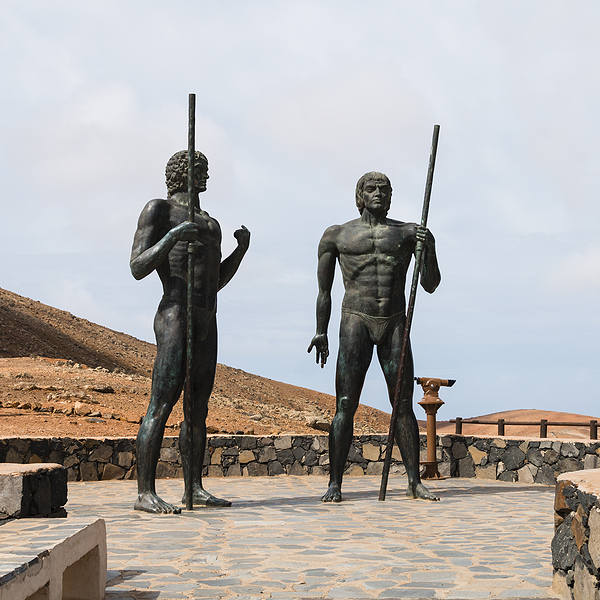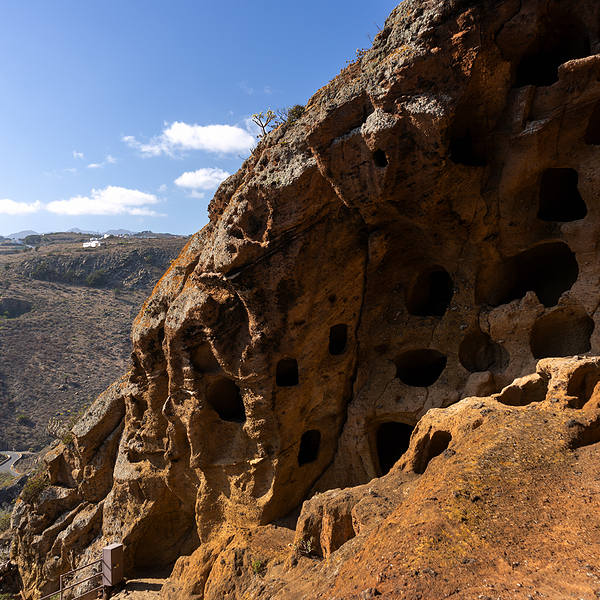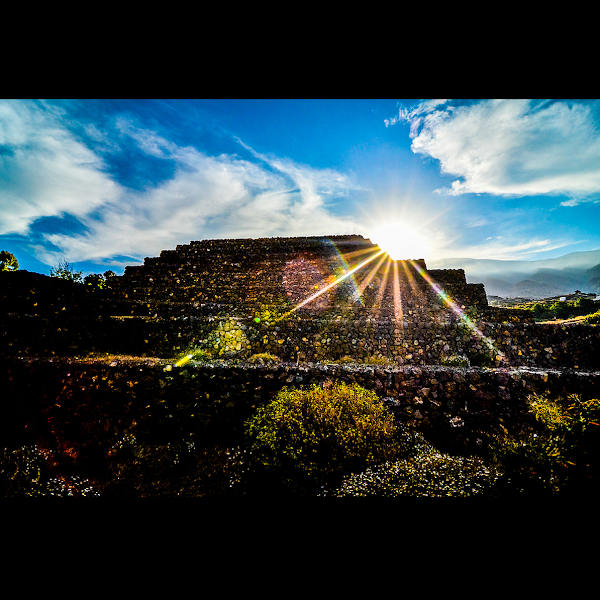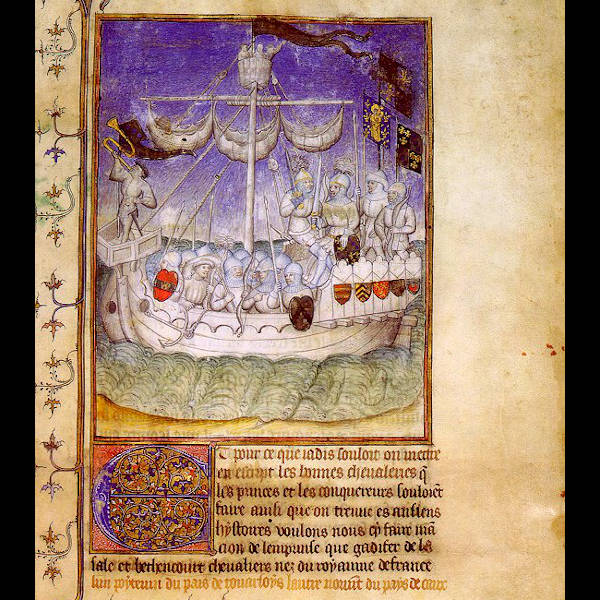DNA spotlight
The Guanches

The mysterious Guanches arrived on the Canary Islands at least 3000 years ago and originated from the Berber region of North Africa. They brought goats, pigs, and dogs with them from the mainland and are thought to have largely relied off goat herding and grain crops. No metal has been found in Guanches settlements so all tools were made of wood, stone and bone. Jewlery was crafted from bone, clay beads and shells. Many people lived in caves or circular houses made of stone with thatched rooves. 9 kingdoms were formed on Tenerife and during times of war combat ensued using wooden javelins, maces, obsidian knives and shields from the dragon tree. In some areas people are believed to have worshipped the sun and the mother godess. In Tenerife during the summer solstice the Guanches would kill livestock and throw them into a fire as an offering to the gods.

Just 600 meters south of the northern coast of the Gran Canaria island lie the Caves of Valeron. This was the largest pre-Hispanic collective granary, pre-dated Roman times and was used by the locals until the island was conquered by the Spanish at the end of the 15th century. It was dug out of the cliffs using stone and wooden tools and hidden from the sea with extremely steep access slopes. Each cave had doors made of wood or stone which would protect the granary contents. Numerous idols, paintings, ceramics, bones and ashes have been found within the cave system as well. Over a dozen similiar caves have been found on the same island although this cave complex was the largest distributed on 8 levels with over 350 storage chambers.

The Pyramids of Guimar are six rectangular pyramid-shaped terraces built from lava stone on the island of Tenerife. The famous adventurer Thor Heyerdahl hypothesised that the pyramids formed a temporal and geographic stopping point on voyages between the ancient Egyptian and Mayan civilizations. However these pyramids have more recently been dated to the 19th century. They had been in reality constructed by the local population using classical methods of materials and construction as found in other sites on Tenerife. Interestingly, the outside wall aligns to the sunset on Summer solstice, whereas the stairs on the western side face the rising sun on Winter solstice. The border edge covered up a natural lava cave which has yielded Guanches artifacts dating from 600-1000 AD.

The conquest of the Canary Islands took place between 1402 and 1496 by Castilian nobility and the Spanish crown itself. The first phase was carried out by several Norman nobles including Jean de Bethencourt. He owned textile factories and dye works which greatly benfited from the orchil lichen found in the Canaries. By 1405 the island of Lanzarote was captured as the native kings of the island surrendered leaving Bethencourt the absolute owner of the island. The island of El Hierro fell in 1405 as there was no resistance by the scattered Guanche population who in turn were largely sold as slaves. This island was repopulated by Norman and Castilian settlers. The island of La Gomera was incorporated as a fiefdom but had frequent uprisings. These were snuffed out and 200 rebels were sold into slavery in Spain. The largest islands of Gran Canaria, La Palma and Tenerife were conquered as part of the Conquista Realenga operated and supported directly by the Spanish Crown and the conquest came to a completion.
Sample: Guanche Tenerife Canary Islands
- Sample ID: gun001
- Year: 1100 AD
- Sex: Male
- Location: 28.1009,-15.4093
Sample: Guanche Canary Islands
- Sample ID: gun002
- Year: 1090 AD
- Sex: Male
- Location: 28.4659,-16.2445
Sample: Guanche Tenerife Canary Islands
- Sample ID: gun004
- Year: 1100 AD
- Sex: Female
- Location: 28.1009,-15.4093
Sample: Guanche Canary Islands
- Sample ID: gun005
- Year: 960 AD
- Sex: Female
- Location: 28.4659,-16.2445
Sample: Guanche Canary Islands
- Sample ID: gun006
- Year: 1100 AD
- Sex: Male
- Location: 28.1009,-15.4093
Sample: Guanche Canary Islands
- Sample ID: gun007
- Year: 1100 AD
- Sex: Male
- Location: 28.1009,-15.4093
Sample: Guanche Canary Islands
- Sample ID: gun008
- Year: 1100 AD
- Sex: Female
- Location: 28.1009,-15.4093
Sample: Guanche Tenerife Canary Islands
- Sample ID: gun011
- Year: 800 AD
- Sex: Male
- Location: 28.4659,-16.2445
Sample: Guanche Tenerife Canary Islands
- Sample ID: gun012
- Year: 630 AD
- Sex: Male
- Location: 28.1009,-15.4093
Sample: Guanche Tenerife Canary Islands
- Sample ID: gun013
- Year: 1100 AD
- Sex: Female
- Location: 28.1009,-15.4093
Sample: Guanche Tenerife Canary Islands
- Sample ID: gun014
- Year: 1100 AD
- Sex: Male
- Location: 28.1009,-15.4093
